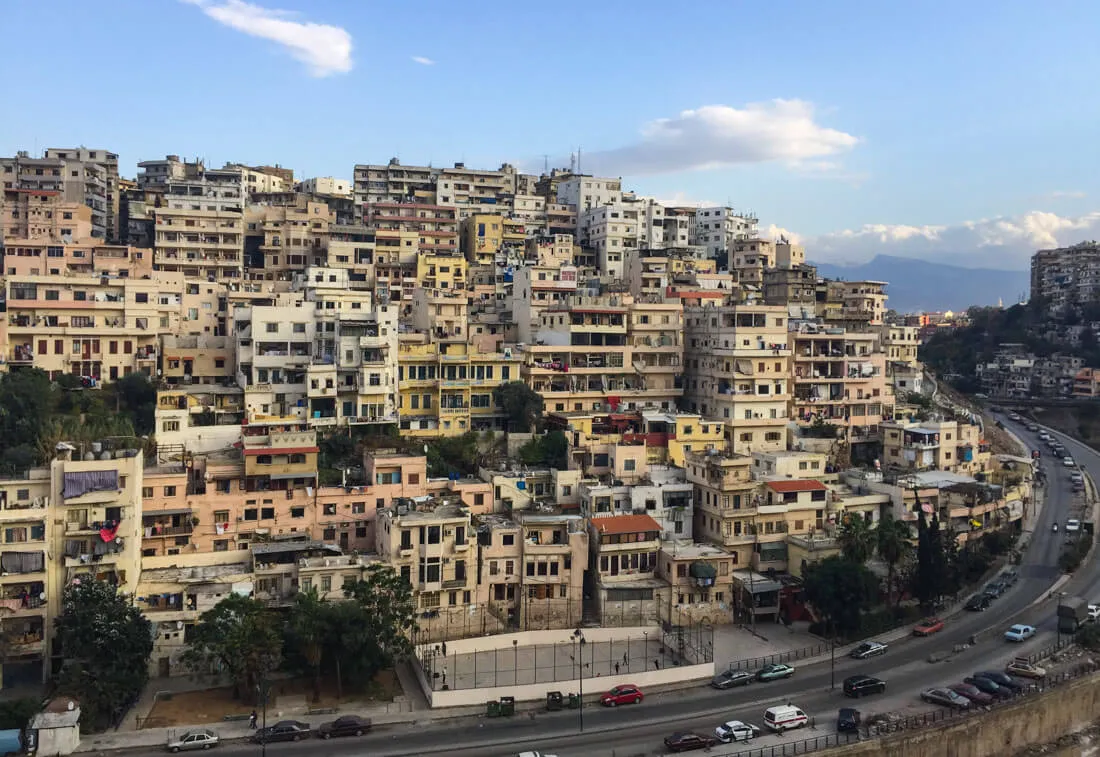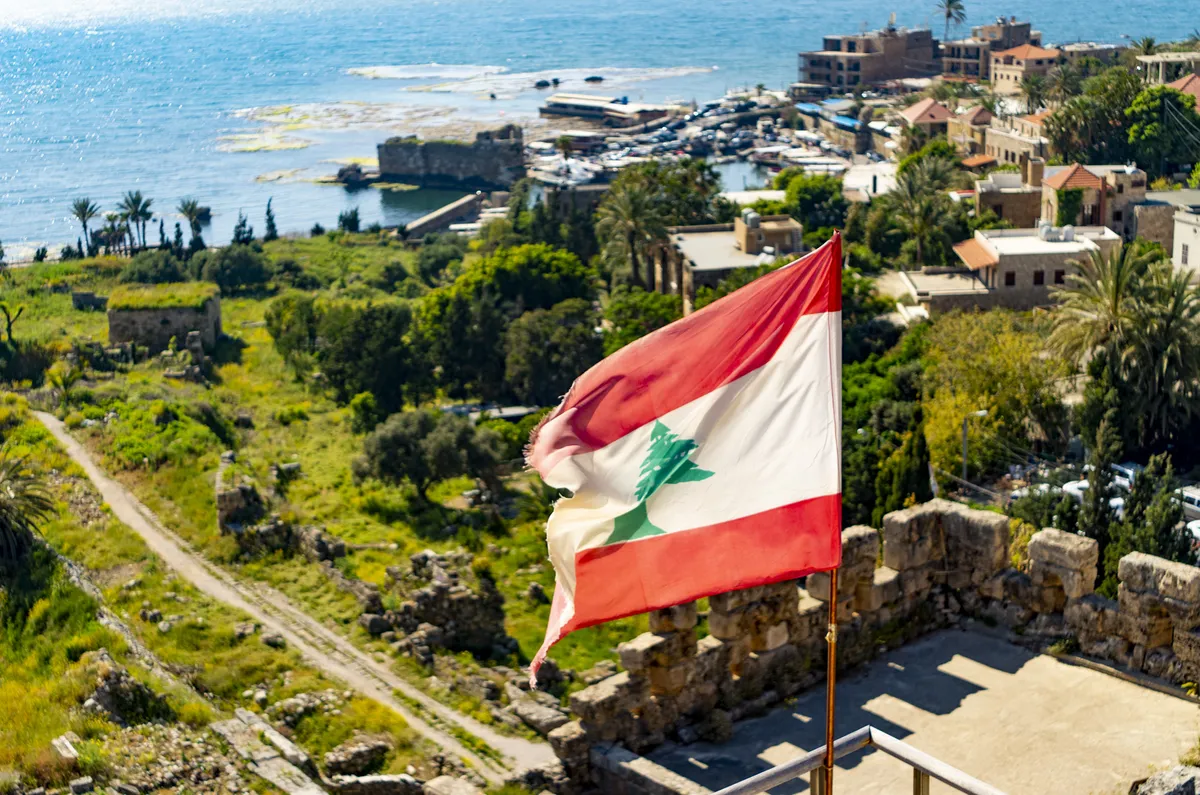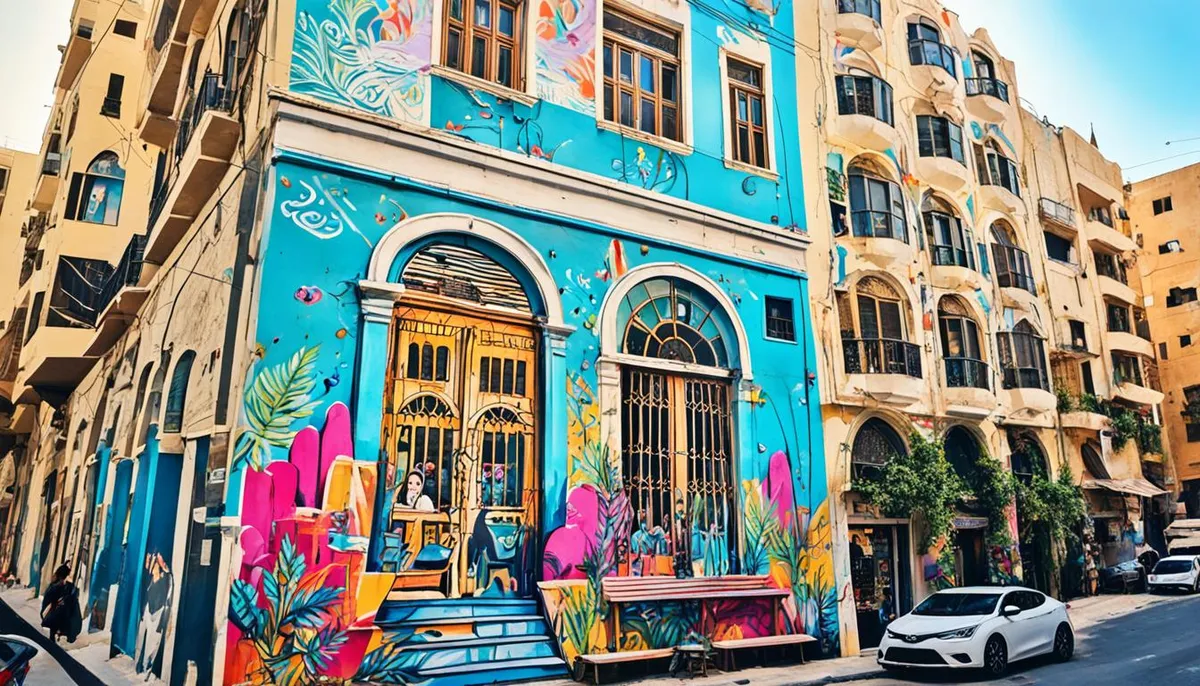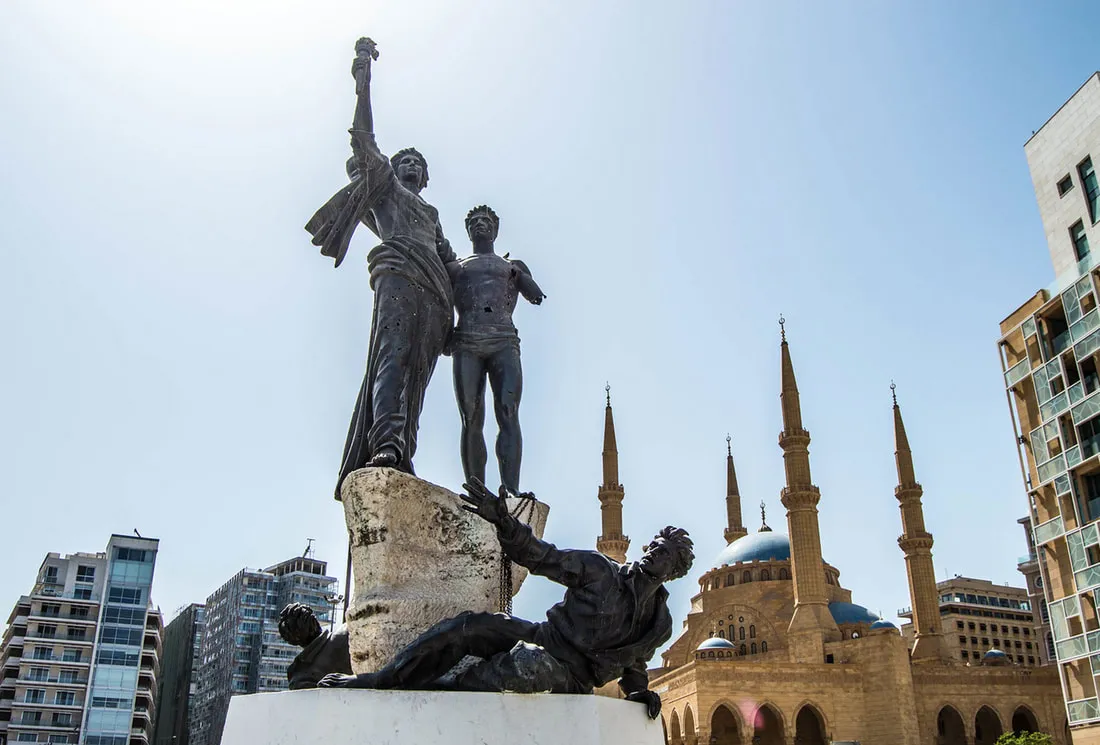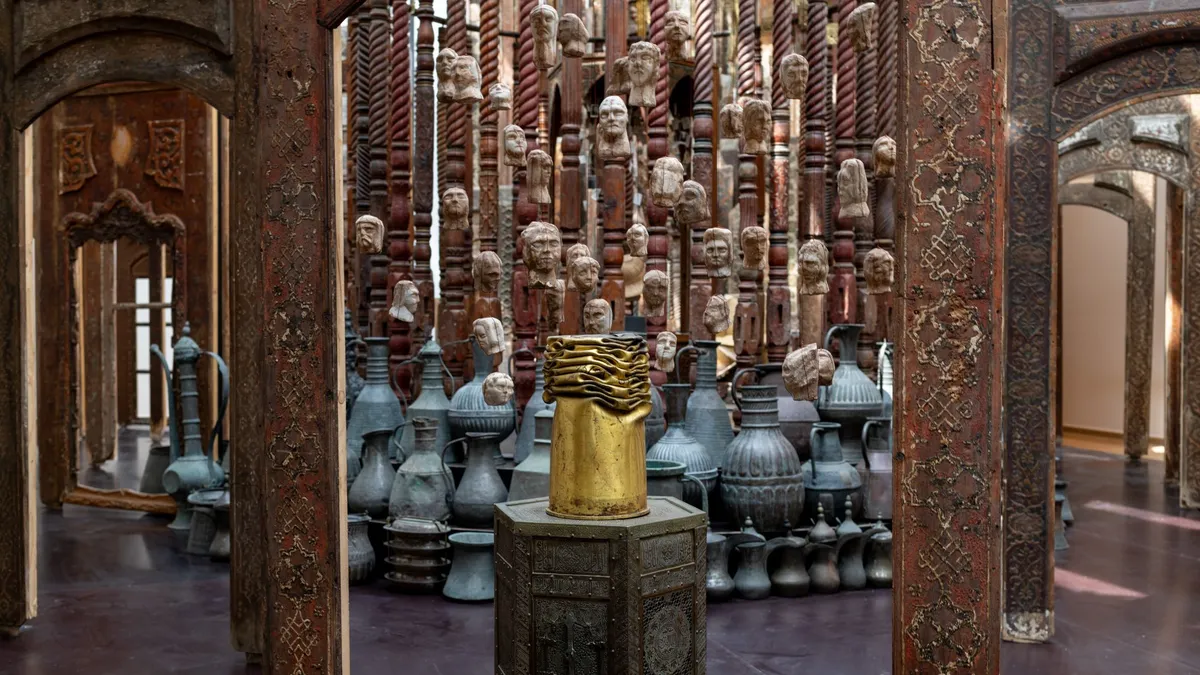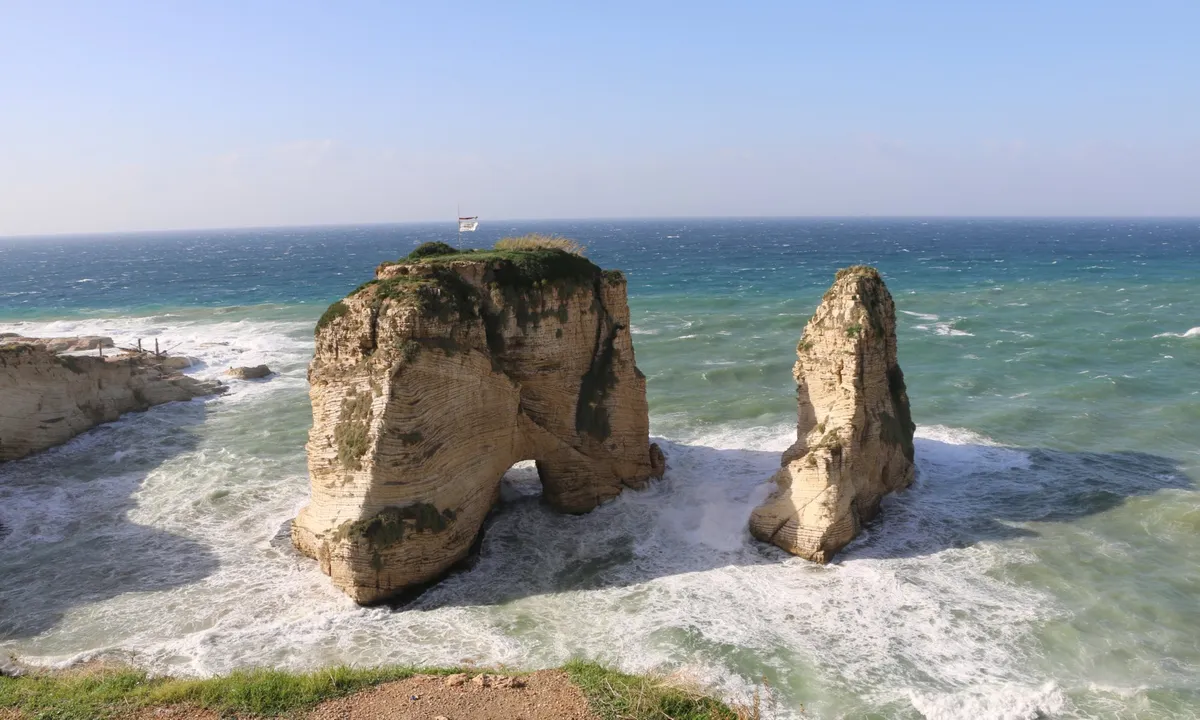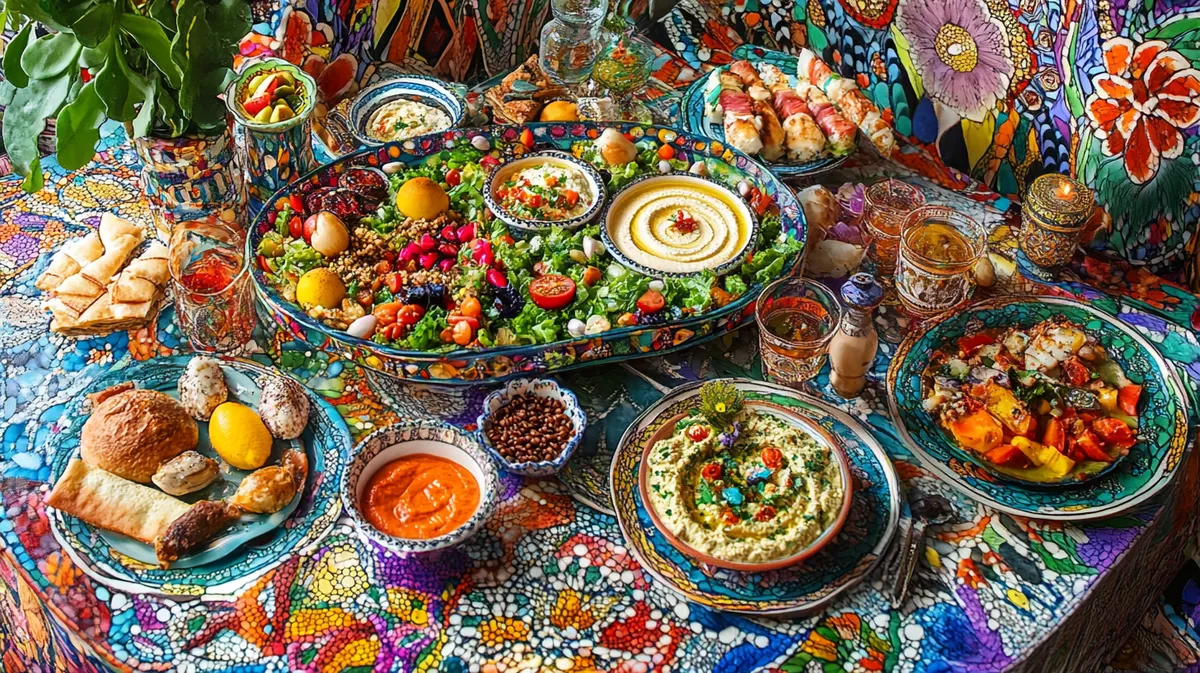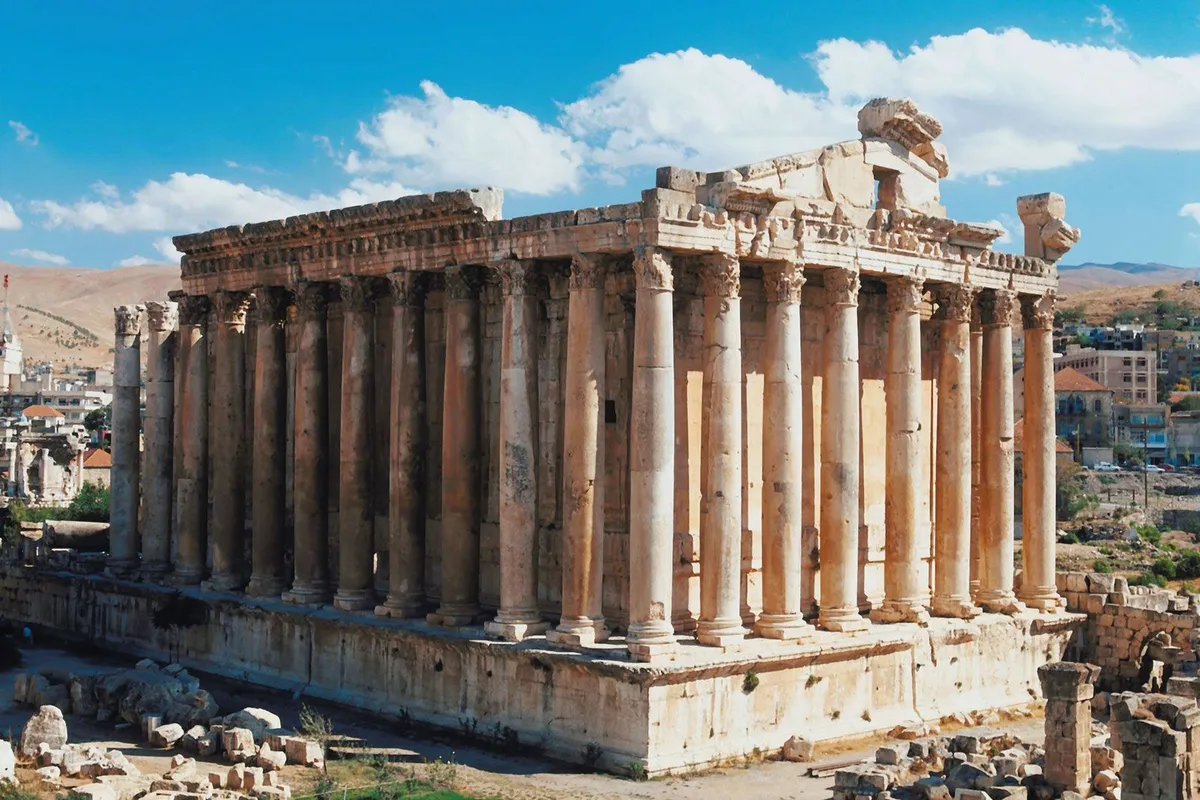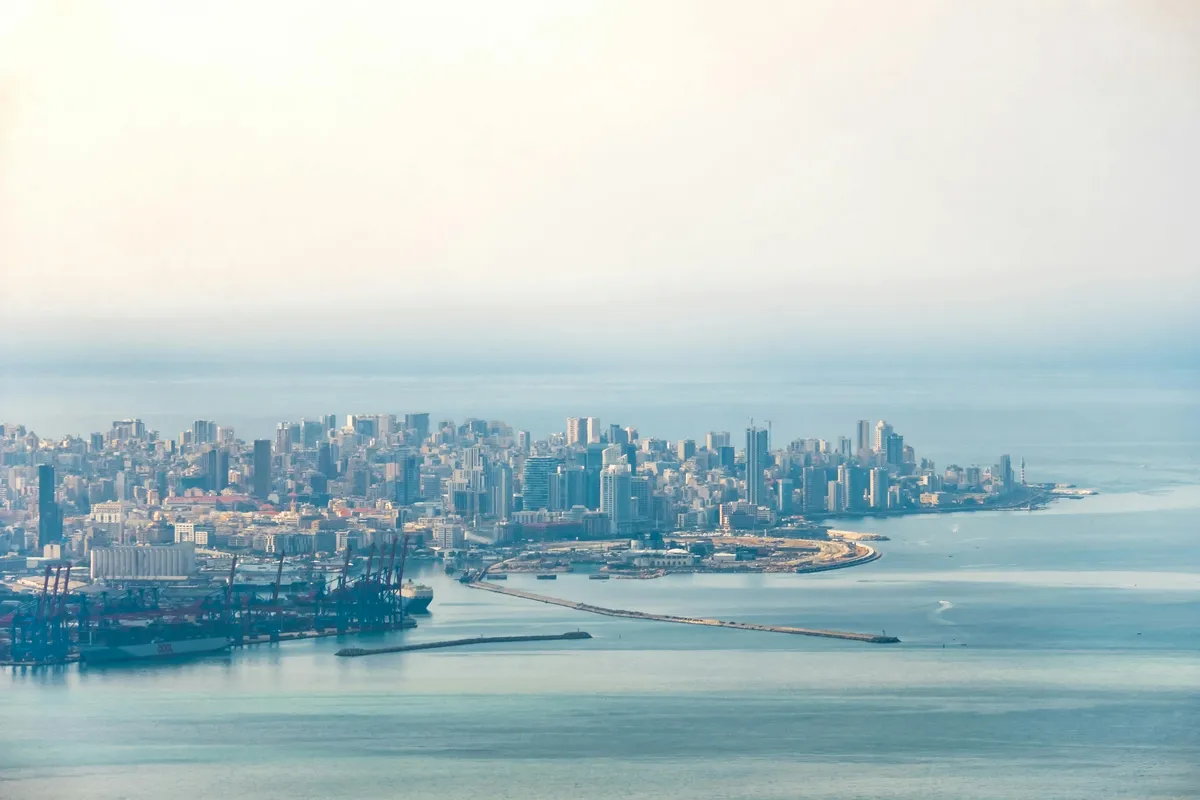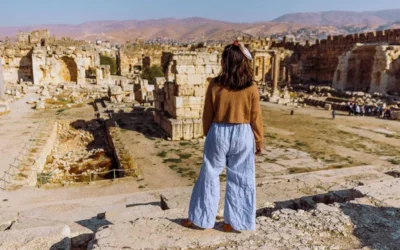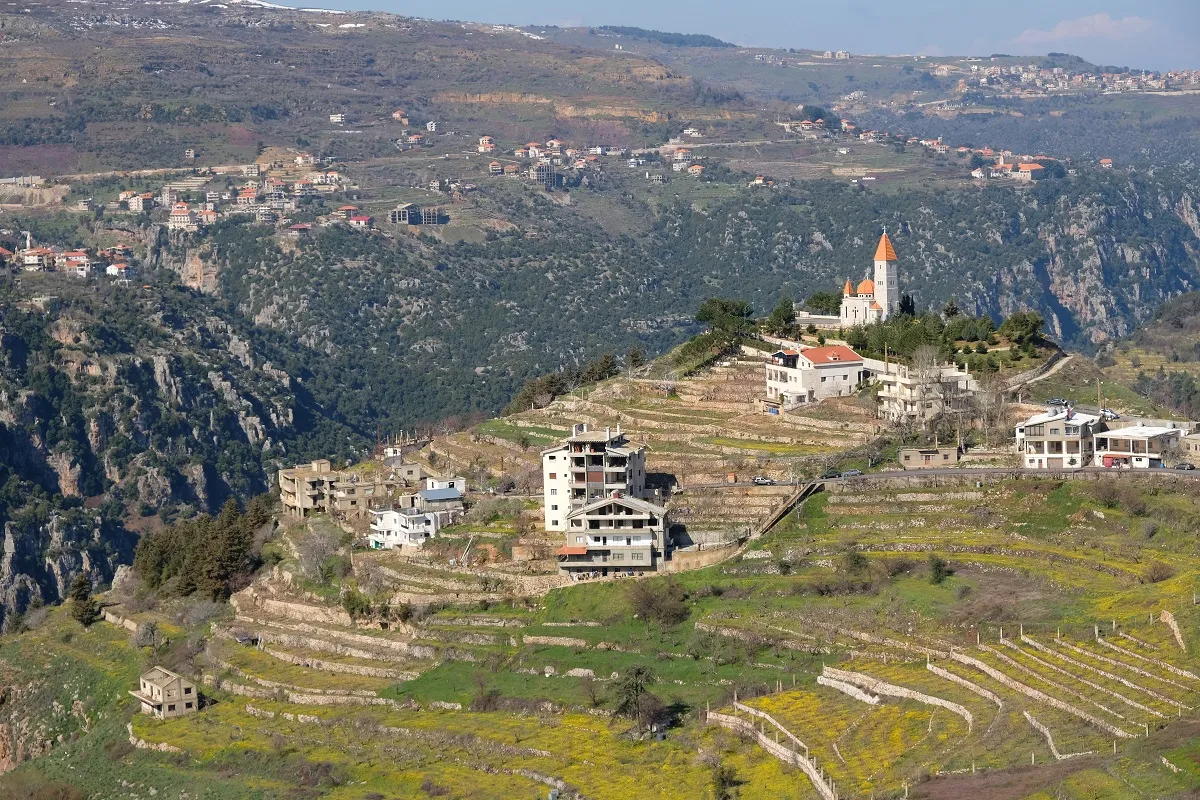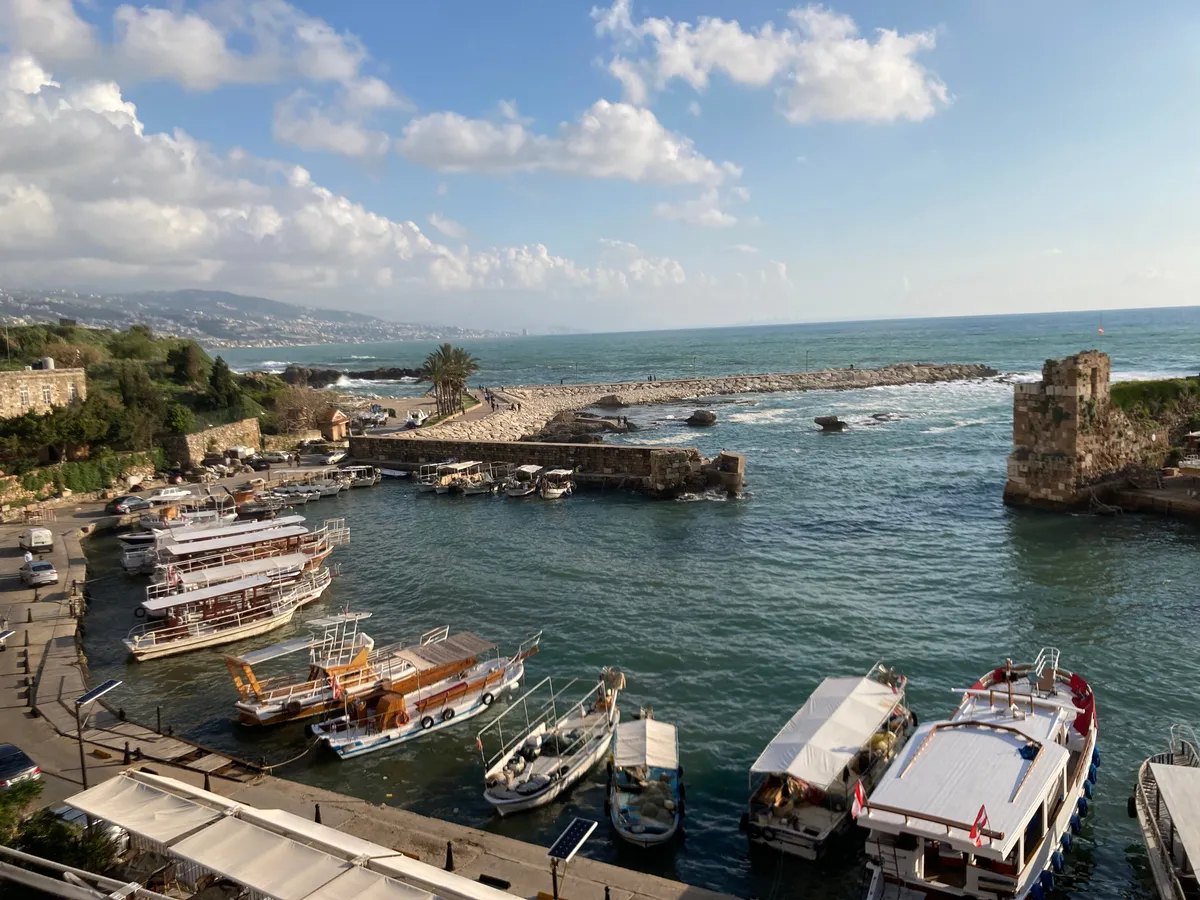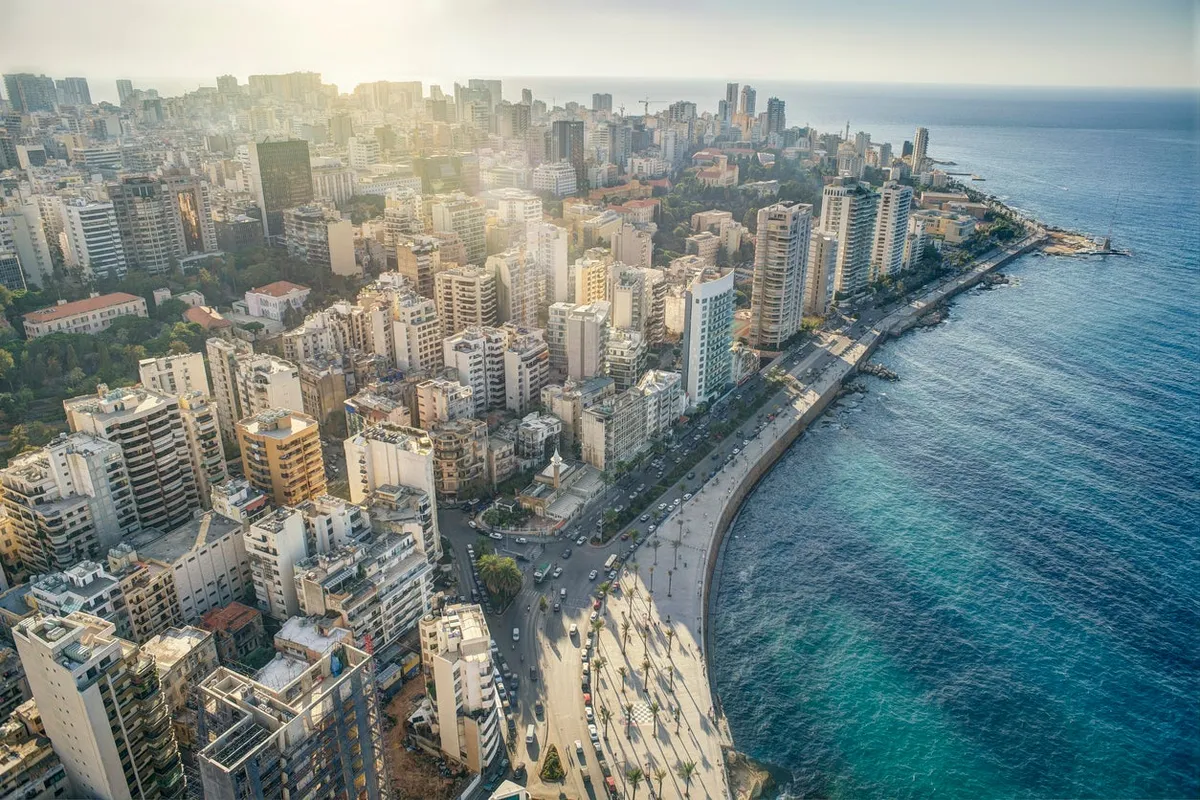Listen, I’m not going to sugarcoat this – planning your Beirut travel means facing some serious contradictions. The U.S. State Department has issued a Level 4 “Do Not Travel” warning, yet travelers who’ve recently walked these Mediterranean streets tell a completely different story. After diving deep into official advisories, firsthand accounts, and on-the-ground realities, I’m here to give you the full picture. This isn’t about dismissing risks or ignoring concerns; it’s about understanding what you’re really stepping into. Beirut, often called the “Paris of the Middle East,” is a city that’s been destroyed and rebuilt seven times over millennia. That resilience pulses through every street corner, every late-night shawarma stand, and every warm welcome you’ll receive.
Is Beirut Safe? Understanding the Travel Landscape
Before you book anything, let’s tackle the elephant in the room head-on. The safety conversation around a trip to Beirut requires looking at two completely different perspectives that somehow both tell the truth.
What the Official Warnings Say
The U.S. Department of State maintains a Level 4 “Do Not Travel” advisory for Lebanon – their highest warning level. The reasons cited are comprehensive: crime, terrorism, civil unrest, kidnapping, unexploded landmines, and risk of armed conflict. The U.K.’s Foreign, Commonwealth & Development Office echoes these concerns, advising against all travel to certain areas of Beirut’s southern suburbs, areas south of the Litani River, and portions of the Beqaa Governorate near the Syrian border.
Here’s the critical part: U.S. government personnel face travel restrictions, and the embassy’s ability to provide emergency services is extremely limited. Both governments warn that demonstrations can turn violent without warning, and in a large-scale crisis, you shouldn’t count on government-led evacuation.
What Travelers Actually Experience on the Ground
Now here’s where it gets interesting. Recent American and Western travelers consistently report something completely different. One American who moved to Lebanon in 2020 says bluntly: “You will love it, don’t overthink things. Everyone will like you as long as you’re friendly.” Another traveler notes, “Beirut is generally safe, just be as vigilant as in NYC.”
A comprehensive trip report concludes: “After our visit, we can say, yes, it is very safe to visit Beirut and other places in Lebanon. Of course, the country has problems, and you should know which areas you should avoid. But if you use common sense, the country has open arms for you.” Even during periods of heightened regional tension, one visitor observed: “If I wouldn’t follow the news I wouldn’t even know there was a war.”
How to Navigate Beirut Safely
The smart approach to your Beirut travel combines both perspectives. You’re not ignoring risks – you’re understanding their specific nature and location.
- Areas to Definitively Avoid: Stay away from southern suburbs near the airport (Dahiyeh), the deep south near the Israeli border, and areas in the Beqaa Valley adjacent to the Syrian border. There’s zero disagreement on this between official sources and travelers.
- Cultural Sensitivity is Non-Negotiable: Don’t engage in political discussions about the civil war, economic situation, the 2019 revolution, Hezbollah, or regional conflicts. Listen respectfully if locals bring these up, but don’t offer opinions.
- Standard Urban Precautions Apply: Guard your belongings, avoid flashy displays of wealth, stick to well-lit areas at night, and give protests a wide berth – even peaceful ones can escalate quickly.
- Emergency Preparedness is Your Responsibility: The warnings about limited government evacuation support are real. Have a personal exit plan, enough funds for an unexpected departure, and comprehensive travel insurance. In a crisis, your mobility depends on your financial resources.
Essential Beirut Travel Planning: Visas, Money & More
Getting the logistics right is crucial for a smooth trip. Here are some essential Lebanon travel tips.
Getting In: Visas and Passport Requirements
U.S. citizens need a passport valid for at least 90 days beyond entry, with one blank page. The good news? You’ll get a free one-month visa on arrival at Beirut-Rafic Hariri International Airport, which is extendable if needed.
The critical restriction: Your passport cannot contain Israeli stamps or visas. Any evidence of travel to Israel means immediate entry denial. This is non-negotiable.
The Money Reality: Lebanon’s Cash-Only Economy
Understanding the cash-only economy is the single most important practical skill for your Beirut travel. Lebanon’s economic crisis created a dual exchange rate system that will drain your wallet if you’re not careful.
There’s the old official government rate (around 1,500 Lebanese Pounds to $1 USD) and the real “black market” or “Sayrafa” rate (which can fluctuate dramatically, often between 21,000-90,000 LBP to $1 USD). Here’s what this means for you:
- Never use credit cards or ATMs. Foreign cards process at the official rate, making everything absurdly expensive.
- Bring all your spending money in U.S. dollar cash – the entire amount for your trip. Notes should be clean, untorn, and preferably newer, as damaged bills may be rejected. Mix denominations, including small bills for minor purchases.
- Exchange USD for LBP at official exchange offices on Hamra Street, not at the airport. Many businesses accept USD directly, giving you a receipt in both currencies, with change in Lira.
Infrastructure Realities and Essential Apps
Daily power cuts are a normal part of life in Lebanon due to fuel shortages. Mid-range and high-end hotels have powerful generators providing seamless electricity, but cheaper accommodations might not. This matters for food safety – be cautious ordering meat from inexpensive places where refrigeration might be inconsistent.
Download these apps before arrival:
- Bolt (cheaper ride-sharing)
- Uber (better quality cars)
- Allo Taxi (highly-regarded professional local service)
- Toters (food and grocery delivery)
Critical Tip: Always select “cash” as the payment method in ride-sharing apps to avoid being charged at the official exchange rate.
Language and Health Considerations
Communication won’t be an issue. English, French, and Arabic are widely spoken in Beirut, especially among younger generations and service industry workers.
Get travel insurance with robust overseas coverage. Most Lebanese medical providers only accept cash payments. The State Department notes that ambulance services may not meet U.S. standards; in serious situations, taking a taxi to a major hospital might be faster than waiting for an ambulance.
Where to Stay in Beirut: A Neighborhood Guide
Choosing your neighborhood shapes your entire experience. Each district has its own personality, and picking the right fit for your Beirut travel style matters more than you’d think.
Mar Mikhael and Gemmayzeh: The Creative Heartbeat
These adjacent neighborhoods form Beirut’s epicenter of art, nightlife, and creative energy. Mar Mikhael is the current trendy hub where coffee aromas mingle with vibrant street art. It’s densely packed with eclectic bars, independent galleries, and innovative restaurants. Gemmayzeh offers charming staircases, historic buildings, and a slightly more bohemian vibe. Both areas suffered significant damage in the 2020 port explosion but have shown remarkable resilience. Stay here if you want endless dining and drinking options right outside your door. The trade-off? It can be loud and frenetic.
Hamra and Ras Beirut: The Cosmopolitan Core
Hamra was Beirut’s intellectual and cultural heart during its 1960s golden age and retains that vibrant, bohemian atmosphere. It’s a melting pot of cultures with historic cafes, theaters, and bookshops. The prestigious American University of Beirut (AUB) is located here, and its leafy, sea-view campus is worth exploring. Hamra offers balanced nightlife – lively but less intense than Mar Mikhael – plus great shopping and dining. It’s perfect for travelers who want cosmopolitan energy without the all-night party scene.
Achrafieh: The Elegant Enclave
One of Beirut’s oldest and most upscale districts, Achrafieh blends old-world elegance with modern sophistication. Think beautiful French colonial and Ottoman-era buildings, quieter residential streets, and high-end boutiques. Home to the renowned Sursock Museum, it offers a refined, tranquil atmosphere. Choose Achrafieh if you prefer a quieter base with a more polished, European feel. The downside is that you’re slightly removed from the main action and nightlife hubs.
Badaro: The Laid-Back Local Gem
Badaro feels like a village within the city – a hidden gem with a distinctly local, laid-back vibe. Its main street is peppered with cozy, unpretentious bars and cafes popular with residents. Its proximity to the National Museum and Horsh Beirut (the city’s largest park) makes it convenient yet peaceful. This area is ideal for travelers wanting to escape tourist hubs and experience authentic Beirut life. Just know you’ll need to travel a bit more to reach major tourist sites.
Accommodation Options for Every Budget
Your choice of lodging can define your trip. Fortunately, Beirut offers a wide range of options.
Boutique Charm and Character
For experiences rich in personality, Beirut’s boutique hotels deliver. Baffa House in Mar Mikhael offers cozy bed-and-breakfast vibes in a beautifully restored building. The Grand Meshmosh Hotel in Gemmayzeh is popular for its charming courtyard and social atmosphere. For polished boutique luxury, O Monot Boutique Hotel in Saifi provides contemporary elegance and a rooftop pool.
Mid-Range Comfort and Value
Hamra Urban Gardens stands out, offering both hotel rooms and a well-regarded backpacker hostel, complete with a popular rooftop pool. Other solid Hamra choices include Caramel Boutique Hotel on the main street and the exceptionally well-reviewed El Sheikh Suites Hotel.
Luxury Without Compromise
Beirut’s luxury scene is world-class. InterContinental Phoenicia Beirut overlooks the marina as a landmark institution. Mövenpick Hotel Beirut offers unique resort-like vibes with a private beach and extensive health club. Four Seasons Hotel Beirut delivers panoramic views, while Sofitel Beirut Le Gabriel sits in Achrafieh’s heart.
Apartment Rentals for Longer Stays
Airbnb is widely used and offers everything from modern studios in Mar Mikhael to spacious apartments in Achrafieh. This option gives you independence and often better value for extended Beirut travel.
Top Historical Sites: A Walk Through Beirut’s History
The true magic of visiting Beirut lies in physically walking through thousands of years of history within a few blocks. Exploring these locations is one of the most rewarding things to do in Beirut.
National Museum of Beirut
Start here – it’s mandatory for understanding Lebanon’s deep history. The magnificently displayed collection includes priceless Phoenician artifacts, Roman and Byzantine mosaics, and a famous collection of anthropoid sarcophagi. This institution provides essential context for everything else you’ll see.
Downtown Beirut: A Living Museum
Stand in Martyr’s Square with its iconic, bullet-riddled statue – a potent civil war symbol. Explore Place de l’Etoile (Nejmeh Square), the French-designed heart of the district with its clock tower. The grand Mohammad Al-Amin Mosque’s striking blue domes stand beside the historic St. George Greek Orthodox Cathedral. The cathedral’s underground Crypt Museum reveals layers of previous churches and civilizations on the same site. Nearby, excavated Roman Baths and the main Roman road (Cardo Maximus) offer direct links to antiquity.
Beit Beirut: Memory and Reflection
Located on the former “Green Line” that divided the city during the civil war, this bullet-scarred building was once a notorious sniper’s nest. Now preserved and transformed into a museum and urban cultural center, it’s a powerful, haunting space. Some visitors find it emotionally overwhelming – and that’s exactly the point.
Art, Culture, and Modern Beirut
The city’s creative spirit is palpable and a key part of any visit.
Sursock Museum
Housed in a magnificent 19th-century Italianate villa in Achrafieh, this premier venue for modern and contemporary Lebanese art is as much about the building as the collection. The architecture alone justifies the visit.
American University of Beirut Campus
More than a university, it’s a tranquil, leafy oasis with stunning Mediterranean views. Explore the beautiful grounds, the excellent archaeological museum, and a striking Zaha Hadid-designed building. It’s free to wander and offers unexpected peace within the city.
Street Art and Independent Galleries
Beirut’s soul lives in its streets. Wander the back alleys of Mar Mikhael and Gemmayzeh to discover thriving street art – colorful murals adorning walls and staircases. Independent galleries dot these neighborhoods, showcasing the work of local and regional artists. This isn’t curated museum art; it’s raw, immediate, and constantly evolving.
Natural Beauty and Leisure in Beirut
Balance your urban exploration with moments of seaside calm and green escapes.
The Corniche and Pigeon Rocks (Raouché)
This is the quintessential Beirut experience: strolling, jogging, or biking along the Corniche, the grand seaside promenade. This pedestrian boulevard is one of the city’s most democratic public spaces, drawing people from all walks of life. The walk culminates at the iconic Pigeon Rocks – two majestic limestone formations rising from the sea. Watching the sunset from a cafe overlooking the rocks is an unforgettable ritual.
Zaitunay Bay
This represents modern, upscale waterfront Beirut. A sleek marina promenade is lined with cafes, restaurants, and yachts, popular for meals or coffee with a view. It’s polished and pleasant, though it lacks the raw character of other neighborhoods.
Urban Green Spaces
For respite from the city bustle, Sanayeh Public Garden offers well-maintained green space and fountains. Horsh Beirut, the city’s largest park, provides vast expanses of pine forest. Both offer locals and visitors much-needed breathing room.
Adventure Opportunities Beyond City Limits
Lebanon’s compact size and varied geography create an adventure playground easily accessible from Beirut. Guided ATV and off-road tours through the Lebanese mountains offer access to remote trails and spectacular viewpoints. The dramatic cliffs and valleys make it prime territory for paragliding. For nature lovers, hiking in the Chouf Biosphere Reserve or the sacred Qadisha Valley comes highly recommended.
A Guide to Beirut’s Legendary Food Scene
For many, the food is the primary reason to visit. Our Beirut food guide covers the essentials for a journey through fresh, vibrant flavors central to Lebanese culture.
Unmissable Dishes
Beyond the globally famous hummus and tabbouleh, try mutabbal (smoky eggplant dip), fatteh (layered chickpeas, bread, and yogurt), and kibbeh (bulgur and minced meat croquettes). Street food is an essential part of the experience, with world-class falafel and shawarma available on nearly every corner.
High-End and Trendy Dining
BARON in Mar Mikhael earns consistent praise for its inventive, market-driven menu with excellent vegetarian options. Liza Beirut offers refined Lebanese cuisine in a stunningly decorated traditional house in Achrafieh. For Armenian-Lebanese fusion, Mayrig is a celebrated choice.
Classic Lebanese Authenticity
Le Chef and Cafe Em Nazih in Gemmayzeh are beloved institutions for authentic, no-frills mezze (small plates), known for great food and lively atmospheres. Abdel Wahab is another classic for traditional meat dishes, while Bayt em Nazih in Hamra stays perpetually packed for its excellent local fare.
Legendary Street Food
Falafel M. Sahyoun is reputedly the city’s oldest falafel shop, run by feuding brothers in separate storefronts – the drama adds to the flavor. For late-night fixes after an evening in Hamra, joining the queue at Barbar for shawarma is a local rite of passage.
Immersive Culinary Experiences
Take your food tour beyond tasting with hands-on experiences. Private multi-generational cooking classes involve visiting local families’ homes to learn traditional dishes from family recipes. It’s true cultural immersion. Winery tours in the Bekaa Valley, including to Chateau Ksara, are also a fantastic option.
Best Day Trips from Beirut
Lebanon’s small size is a major advantage. Base yourself in Beirut and explore the entire country through these easy day trips.
Byblos (Jbeil): The Ancient Port
Just one hour north lies Byblos, a UNESCO World Heritage site and one of Earth’s oldest continuously inhabited cities. Explore the atmospheric medieval old town, wander the ancient souk, visit the impressive Crusader castle, and marvel at archaeological layers spanning millennia. The picturesque historic harbor is the perfect finale.
Baalbek: Majestic Roman Ruins
Located in the Beqaa Valley, Baalbek’s Roman ruins testify to the power of the Roman Empire at its zenith. The site hosts some of the world’s largest and best-preserved Greco-Roman structures, including the monumental Temple of Jupiter. While official advisories urge caution for Beqaa Valley travel, numerous reputable tour companies run safe, guided day trips from Beirut.
Jeita Grotto: Natural Wonder
A finalist for the New7Wonders of Nature, Jeita Grotto is a spectacular natural marvel. This system of crystallized limestone caves is explored on foot in the upper grotto and via a serene boat ride on a subterranean river in the lower grotto. Popular excursions often combine this with Byblos and the Our Lady of Lebanon shrine in Harissa.
Planning Your Beirut Itinerary
Timing your visit and structuring your days can make all the difference.
Best Times to Visit
Beirut enjoys a Mediterranean climate, making it a year-round destination.
- Best Seasons (Spring and Autumn): April-May and September-November are optimal. The weather is pleasantly warm and mild, perfect for exploring on foot.
- Shoulder Season (Summer): June-August brings hot, humid weather, which is peak season for beach clubs and nightlife.
- Low Season (Winter): December-February sees cooler temperatures and the most rainfall but is the prime season for a unique experience: skiing in mountains just a one-to-two-hour drive away.
Sample Itineraries
The 3-Day “Beirut Blitz” focuses on the capital:
- Day 1: Explore Downtown Beirut (Martyr’s Square, Roman ruins), then walk to cosmopolitan Hamra and the AUB campus.
- Day 2: Morning at the National Museum, afternoon at the Sursock Museum, evening exploring Mar Mikhael and Gemmayzeh’s bar scene.
- Day 3: Walk the Corniche to Pigeon Rocks, enjoy a final Lebanese meal, and consider a cooking class.
The 7-Day “Lebanon Explorer” uses Beirut as a base:
- Days 1-3: Follow the “Beirut Blitz” itinerary.
- Day 4: Day trip to Jeita Grotto and ancient Byblos.
- Day 5: Day trip to the Beqaa Valley for Baalbek ruins and wine tasting.
- Day 6: Day trip south along the coast to historic Sidon and Tyre.
- Day 7: Day trip into the mountains to the Chouf Biosphere Reserve and Beiteddine Palace.
Getting There and Around
All international flights arrive at Beirut-Rafic Hariri International Airport (BEY), just south of the city. The departure process can be slow, so arrive at the airport an absolute minimum of three hours before your flight.
Within Beirut, ride-sharing apps like Uber, Bolt, and Allo Taxi are the most efficient transport options. For day trips, the most convenient option is hiring a private car and driver/guide for the day.
Beirut defies simple categorization. It’s a place of immense warmth, profound history, and an infectious, resilient energy that leaves a lasting impression. The decision to travel here, particularly for Americans, requires careful consideration of official advice and a clear-eyed assessment of personal risk tolerance.
However, for prepared, informed, and sensible travelers, the rewards of a Beirut travel experience are immeasurable. To walk these streets is to witness daily acts of defiance against a difficult history and a challenging present. You’ll be welcomed with genuine hospitality, feast on some of the world’s most delicious food, and experience a cultural depth few cities can match. For those who choose to look beyond the headlines, Beirut offers one of the most vibrant, poignant, and unforgettable travel experiences on earth.
